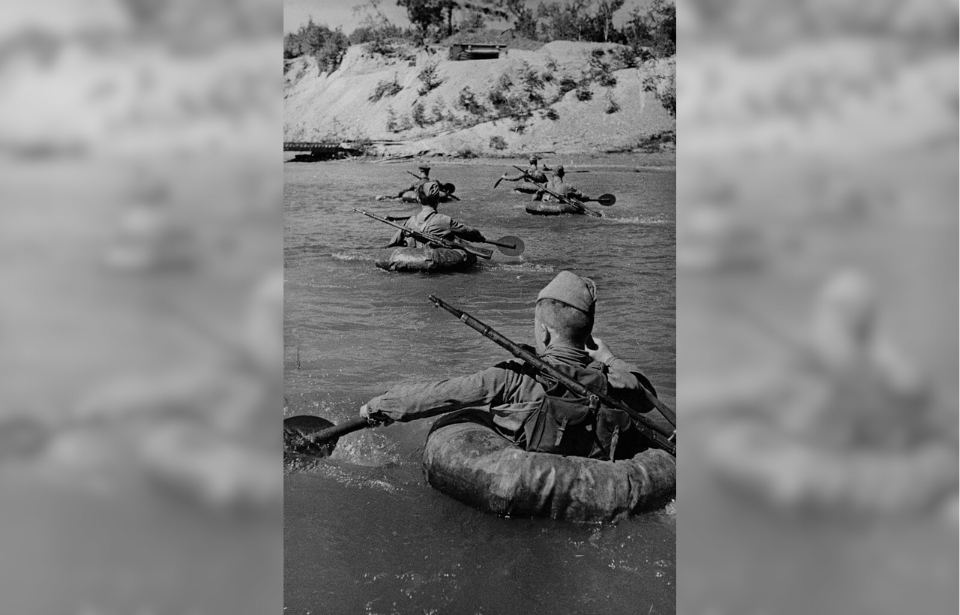During the Second World War, sappers with the Soviet Red Army played a crucial role in military operations along the Eastern Front. These combat engineers were responsible for a wide array of tasks, including fortification construction, mine clearance and bridge building. Following Operation Barbarossa, “Sapper armies” were established to help build fortifications on a larger scale, and they proved to be invaluable assets; their dedication, resourcefulness and bravery made them indispensable.
Soviet sappers faced immense challenges and danger throughout World War II. They operated in close proximity to the front, and were exposed to enemy fire and counterattacks. The above image shows a group paddling across a river at the Leningrad Front in 1942. It’s unclear exactly what their target or mission was, but this is just one small example of what was expected of these troops.
There were units dedicated to specific tasks, such as woodcutting and bridge building. Not only was their work dangerous – it was difficult. Official regulations stated sappers should spend 12 hours a day on construction projects, followed by another two in military training. This wasn’t the reality, however. Instead, most spent up to 14 hours working on construction, with little time left to train.
This aligns with one of the key roles the sappers held: creating fortifications. They built defensive positions, such as trenches and bunkers, to protect their own troops from enemy attacks. This required meticulous planning and engineering skills to ensure the structures were effective and durable.
More from us: The Red Army Used Camels to Fight the Germans at the Battle of Stalingrad
Also vital was their role in mine clearance on the Eastern Front. Soviet sappers meticulously combed through minefields, defusing and detonating explosives. Historian David Glantz described their impressive accomplishments in his book, Colossus Reborn: The Red Army at War, saying:
“[They] contributed significantly to the Red Army’s victories at Leningrad, Moscow, and Stalingrad by preparing defensive lines, providing vital engineering support to the Red Army’s operating fronts, and serving as a base for the formation of other more specialized engineer forces assigned to operating fronts.”
